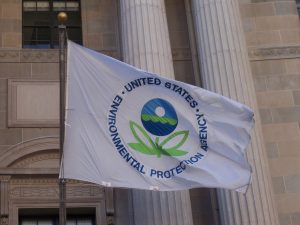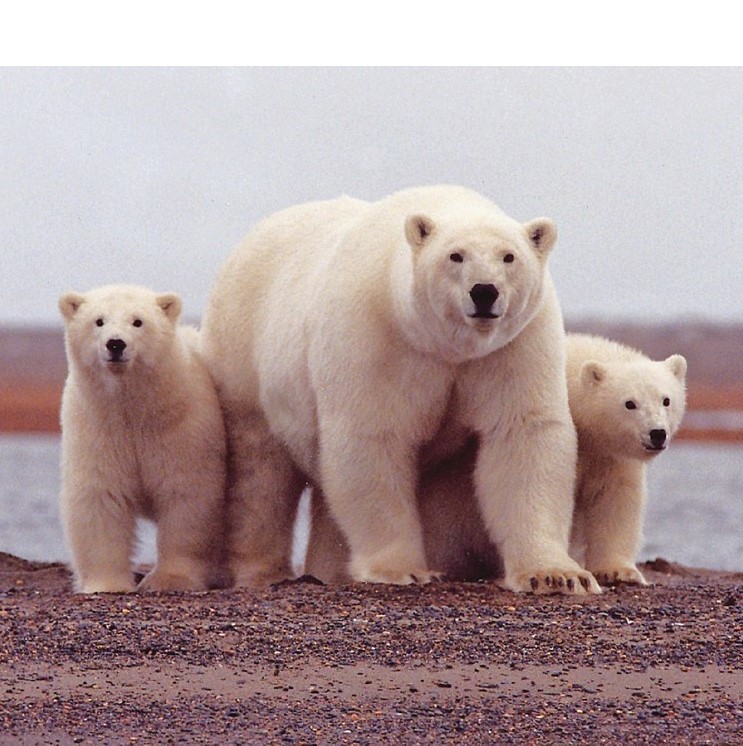By Romany Webb
 The Environmental Protection Agency (“EPA”) made headlines last weekend when the agency fired at least five academics from its Science Advisory Board (“SAB”). A spokesman for Administrator Scott Pruitt told the media that he is considering replacing the fired academics with industry representatives as he “believes we should have people on the board who understand the impact of regulations on the regulated community.” These events have prompted questions about the law governing membership of the SAB.
The Environmental Protection Agency (“EPA”) made headlines last weekend when the agency fired at least five academics from its Science Advisory Board (“SAB”). A spokesman for Administrator Scott Pruitt told the media that he is considering replacing the fired academics with industry representatives as he “believes we should have people on the board who understand the impact of regulations on the regulated community.” These events have prompted questions about the law governing membership of the SAB.
As its name suggests, the SAB is an advisory committee, established to provide EPA with input on scientific matters. It was first established in 1978 by then EPA Administrator, Douglas M. Costle, pursuant to the Environmental Research, Development, and Demonstration Authorization Act (“ERDDA Act”). This blog post offers a short primer on the ERDDA, and on the composition of the SAB, the qualifications of its members, and rules on impartiality and conflicts of interest.
Composition of the SAB
Under section 8(b) of the ERDDA Act (codified at 42 U.S.C. § 4365), the SAB must consist of at least nine members appointed by the EPA Administrator. Each year, EPA’s SAB Staff Office solicits nominations from the public for experts to be appointed to the SAB. The Staff Office reviews the qualifications of each nominee and submits recommendations for new members to the Administrator.
In appointing members to the SAB, the Administrator must comply with the Federal Advisory Committee Act (“FACA”), which applies to all executive advisory committees. The FACA (5 U.S.C. App 1, § 5) requires committee membership to be “fairly balanced in terms of the point of view represented.” The FACA’s legislative history indicates that this requirement was intended to ensure that “special interest groups [cannot] exercise undue influence upon Government through the dominance of advisory committees.” Echoing this language, in National Nutritional Foods Association v. Califano, the Second Circuit Court of Appeals held that committee members must be chosen so that no one interest “dominates.” Thus, for example, it has been suggested that industry representatives on the SAB must be balanced by representatives of the environmental movement.
EPA has indicated that it will appoint, as SAB members, “non-EPA scientists, engineers, and economists and other social scientists . . . from academia, industry, federal, state, and tribal governments, research institutes, and non-governmental organizations.” As of May 8, 2017, the SAB consisted of forty seven members, all but ten of whom were from academia. Of the ten non-academics, three were from industry, four were from non-profit public interest organizations, one was an independent consultant, and two were from state environmental agencies.
SAB Member Qualifications
Section 8(b) of the ERDDA Act (42 U.S.C. § 4365(b)) requires each member of the SAB to be “qualified by education, training, and experience to evaluate scientific and technical information on matters referred to” it. Beyond this little guidance has been provided on the precise qualifications required by SAB members. There is, for example, no requirement that members possess a particular academic degree or have particular professional experience. EPA has, however, repeatedly emphasized the need for members to be independent. For example:
- The SAB Charter indicates that members should be “independent experts in the fields of science, engineering, and economics and other social sciences” (emphasis added).
- Guidance issued by EPA’s SAB Staff Office states: “Collectively, the SAB should constitute a distinguished body of scientists, engineers, economists and social scientists who are widely recognized for their record of scholarly and leadership achievement in their respective fields. Members . . . should have demonstrated ability and experience to examine and analyze issues incisively with the highest level of scientific quality, objectivity and integrity” (emphasis added).
- EPA’s Frequently Asked Questions on SAB Membership indicate that nominees for appointment to the board are evaluated based on “whether they have the scientific education, training, and experience to evaluate basic and applied science issues addressed by the [board].” It goes on to state: “Ethics considerations and . . . impartiality are also important” (emphases added).
Ensuring Impartiality and Avoiding Conflicts
SAB members are appointed as special government employees and are therefore subject to federal ethics rules. Each member must, before beginning his/her service and annually thereafter, submit a financial disclosure form to the EPA’s SAB Staff Office. According to the Staff Office, the form is used by EPA to assess whether the member’s “participation in an advisory activity would present a conflict of interest or might raise an appearance of lack of impartiality.”
Federal ethics rules (18 U.S.C. § 208 and 5 C.F.R. Pt. 2640) prohibit SAB members from participating in any matter in which they, their immediate family, or their employer has a financial interest. That prohibition is, however, subject to two exceptions. First, an SAB member may participate in a “matter of general applicability” – that is, a matter focused on the interests of a discrete and identifiable class of persons (e.g., the development of general regulations, policies, or standards) – affecting his/her employer provided it will not have a special or distinct effect on the employer other than as part of a class. The only time the exception does not apply is where the member owns stock in his/her employer.
Additionally, even if the above exception does not apply, an SAB member may participate in a matter in which he/she or his/her employer has a financial interest with the approval of the EPA Administrator. The Administrator may grant such approval if he/she determines that “the need for the individual’s service outweighs the potential for a conflict of interest created by the financial interest involved.”
Conclusion
Notwithstanding the above, SAB members are expected to act objectively and avoid conflicts of interest where possible. Ideally, as EPA has itself recognized, members should be independent of any interested party. That has not always been the case, however. In the 1980s, the Reagan Administration came under fire for appointing industry representatives to the SAB, while excluding others seen as pro-environment. The George W. Bush Administration also reportedly increased industry representation on the SAB and other advisory committees. Whether history will repeat itself once more under President Trump remains to be seen. But the stage has clearly been set for renewed battles over the SAB’s membership.




